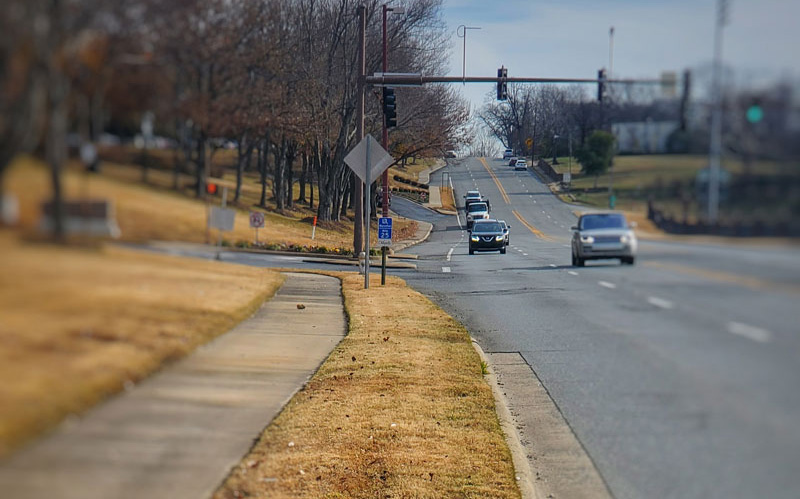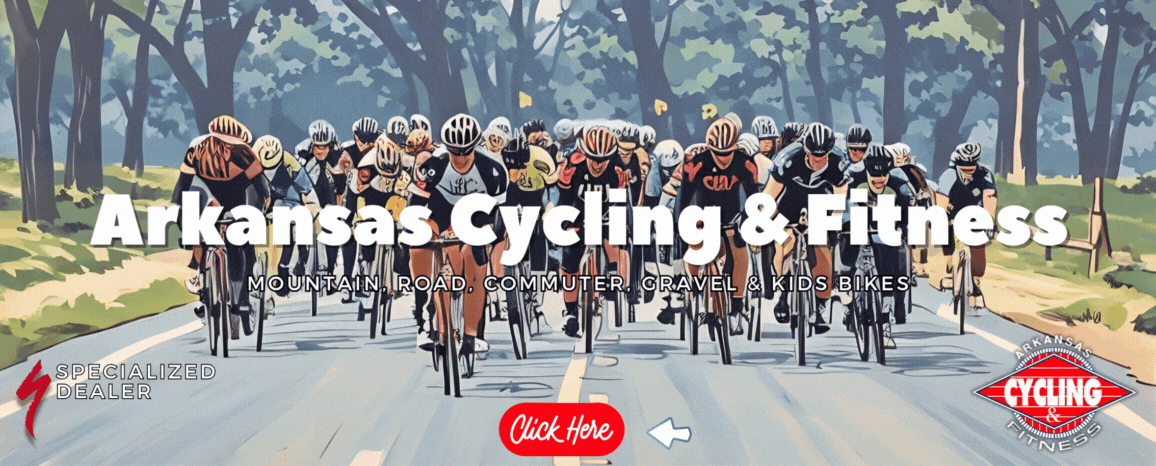In 2006, the Big Dam Bridge opened as a bold connection between two cities, uniting North Little Rock and Little Rock with the longest purpose-built pedestrian and bicycle bridge in North America. Nearly 20 years later, the bridge has become a vital part of central Arkansas’s identity—a hub of activity, inclusion and movement.
But the original dream of a fully connected, multi-use trail circling the Arkansas River through the metro area—a continuous, off-street loop for cyclists, runners, walkers and commuters—remains incomplete.
Local advocates and trail users know it simply as “Close the Loop.”
An Unfinished Vision
The Arkansas River Trail currently stretches more than 88 miles through central Arkansas, including the popular loop of nearly 17 miles that runs through downtown Little Rock and North Little Rock. However, a critical gap remains along the southern riverbank between the Big Dam Bridge and the Two Rivers Park Bridge.
This gap, roughly 0.6 miles in length, forces trail users onto narrow, high-speed roadways like Cantrell Road (Highway 10), creating a safety hazard and breaking the continuity that the rest of the trail system offers.
This section is the missing link. It’s been the biggest complaint from out-of-town cyclists and walkers for over a decade. We built this beautiful trail system, and then suddenly users forced onto a shoulder of a busy highway. It’s jarring—and dangerous.
Why It Matters
In a state known for its natural beauty and growing outdoor economy, finishing the Arkansas River Trail is more than a matter of convenience. It’s a matter of equity, safety and economic potential.
The trail supports thousands of users each week, ranging from daily commuters to families on weekend outings. Businesses near the trail have seen increased traffic, and events like the Big Dam Bridge 100 and Little Rock Marathon benefit from uninterrupted routes that showcase the region’s riverside charm. An example is the boom in housing construction along the North Little Rock side of the Arkansas River Trail between the Broadway Bridge and Burns Park.
The incomplete loop limits the accessibility of the trail to those who are uncomfortable or unable to navigate narrow, high-traffic roads. It’s an issue that disproportionately affects less-experienced cyclists, pedestrians, families with children and people with disabilities.
Trails like this aren’t just for recreation anymore. They’re part of how people connect to work, to community events and to nature. But when you make people feel unsafe, you limit who can use them.
Between a Rock and a Hard Place
The stalled section lies between a steep rock bluff and the active rail line used by Union Pacific. Years of negotiation, engineering studies and environmental considerations have complicated progress. The city of Little Rock has plans and has spent money on engineering but has been stymied by not being able to get a meeting with Dillard’s leadership to share the plan.
The proposed extension would finally allow uninterrupted travel between the Two Rivers Park Bridge and the Big Dam Bridge—completing the most visible and visited section of the Arkansas River Trail loop.
The Time Is Now
As of spring 2025, momentum for closing the loop has returned. With the Big Dam Bridge now approaching its 20th anniversary, many see this as the perfect moment to recommit to the vision that inspired the region in the first place.
Groups like Bicycle Advocacy of Central Arkansas continue to raise awareness. Local planners, trail users and elected leaders are once again in conversation. And with increased funding opportunities through federal transportation and recreation grants, the path forward feels more achievable than it has in years.
The bridge was once considered impossible, and look where we are now. Closing the loop is just the next chapter in the story.
For those who use the trail daily, and for those discovering it for the first time, a completed Arkansas River Trail would represent more than concrete and steel. It would be a promise fulfilled—a dream made whole.
More Information on “Close the Loop.”
- Between a Rock and a Hard Place – Closing the Loop on the Arkansas River Trail
- Dreaming of Closing the Loop
- Why Does Closing the Loop Matter?
This article was originally published on ArkansasOutside.com, your trusted source for outdoor news and updates in The Natural State. Unless otherwise credited, all photos included in this piece are the property of Arkansas Outside, LLC. We take pride in sharing the beauty and adventures of Arkansas through our lens—thank you for supporting our work!







2 Responses
“And with increased funding opportunities through federal transportation and recreation grants, the path forward feels more achievable than it has in years.”
This statement is amusing seeing all the slashing of everything that the Federal Government is doing now. Money for trails is not something they feel is a good expenditure.
Time for a Dillard’s boycott?